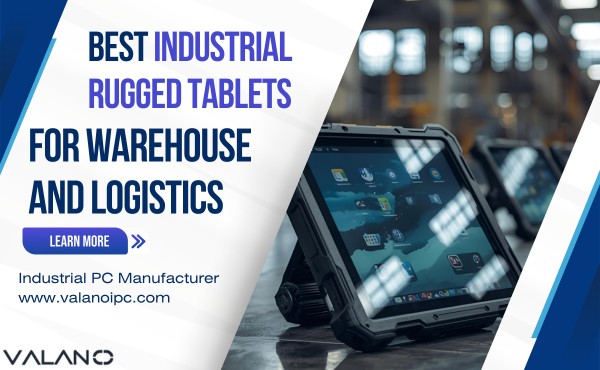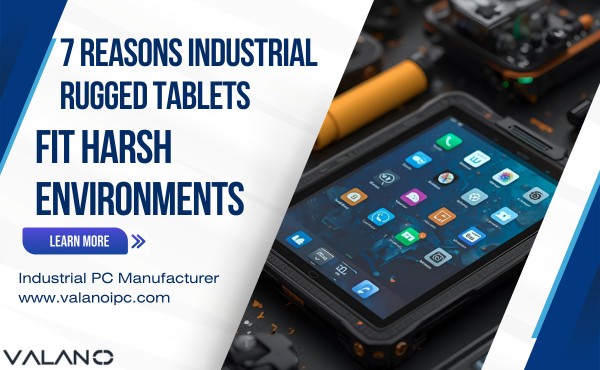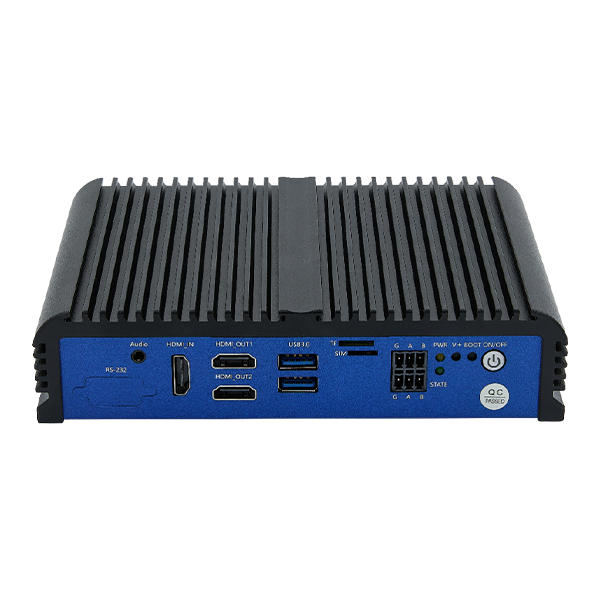
In industrial environments, selecting between serial ports and USB ports plays a crucial role in determining operational efficiency and system reliability. Ports such as serial and USB are essential for connecting machines to systems or tools. Serial ports, including RS-232 and RS-485, are ideal for older machines and close-range applications. On the other hand, USB ports excel in data transfer and connecting newer devices. Selecting the incorrect port can lead to issues or safety hazards. Therefore, it’s crucial to evaluate the advantages of each port type for the specific task at hand.
Key Takeaways
Serial ports are easy to use and work well with older machines. They are also good for sending data over long distances.
USB ports send data faster and can also provide power. They are great for newer devices and quick jobs.
Using both serial and USB ports together gives more options. This lets you connect to both old and new equipment.
Think about what your setup needs. Use serial ports for steady performance and USB ports for speed and flexibility.
Choose industrial PCs that have both port types. This helps your workplace run smoothly and connect to different devices.
Understanding Serial Ports
What Are Serial Ports?
A serial port is a way to send data bit by bit. Unlike parallel ports, which send many bits at once, serial ports send data in order. In the past, they connected things like modems and printers to computers. Today, they are still used in factories because they are simple and dependable.
The name “serial port” often means COM ports like RS-232. These were common in older computers, especially for dial-up internet. Even now, their design shows their history, with UART hardware being an important part.
Key Features of Serial Ports
Serial ports possess characteristics that make them indispensable in industrial settings:
Simplicity: They are easy to use with older machines.
Reliability: They work well even in tough conditions.
Long-Distance Communication: Some, like RS-422, send data far away.
Low Resource Usage: They don’t need much power or system resources.
These features explain why serial ports are still used, even with newer tech available.
Common Types of Serial Ports
In factories, different serial ports are used for specific tasks. Here’s a simple comparison:
Serial Port Type | Description | Max Cable Length | Max Devices | Speed |
|---|---|---|---|---|
RS-232 | One-to-one, used for modems, mice, keyboards | 15m | 1 | 9,600 baud |
RS-422 | One master, many slaves, resists noise better | 1,200m | 10 | Not listed |
RS-485 | Many devices can connect in one network | Not listed | 32 | Not listed |
Each type has a special use. For example, RS-232 is best for short distances, while RS-485 connects many devices. Knowing these differences helps you pick the right one for your needs.
Industrial Uses of Serial Ports
Serial ports are important in factories and industries. They are simple and reliable, making them great for tough environments. These ports help machines talk to each other easily.
Factories often use serial ports for automation tasks. They connect controllers to sensors, motors, and other tools. This setup helps monitor and control processes smoothly. Serial ports are also useful for saving data. For example, they link systems to computers to collect and study information.
In networking, serial ports are key for setting up and managing devices. Many businesses use them to safely access routers, switches, and servers. Here are some examples:
A big networking company used 96 serial ports to set up devices.
A tech company used serial ports to manage servers and power tools.
A bank fixed security problems by using serial ports in their network.
Serial ports are also helpful in managing infrastructure. For example, a large financial company replaced old routers with serial port solutions. Engineers use them to improve network safety and performance.
Exploring USB Ports
What Are USB Ports?
USB ports, or Universal Serial Bus, let devices share data and power. First introduced in the 1990s, they changed how devices connect. They replaced older, bigger connectors with one simple standard. This made connecting devices easier in many industries.
There are different USB types like USB-A, USB-B, Micro-USB, and USB-C. USB-C is the most flexible. It transfers data faster, provides more power, and has a reversible design. This makes it perfect for modern industrial uses.
USB Version | Max Data Speed | Connector Types | Year Introduced |
|---|---|---|---|
USB 1.0/1.1 | 12 Mbps | USB-A, USB-B | 1996/1998 |
USB 2.0 | 480 Mbps | USB-A, USB-B, Mini-USB B, Micro-USB B | 2000 |
USB 3.0 | 5 Gbps | USB-A, USB-B, Micro-USB B | 2008 |
USB 3.1 | 10 Gbps | USB-A, USB-B, USB-C | 2013 |
USB 3.2 | 20 Gbps | USB-C | 2017 |
USB4 v1 | 40 Gbps | USB-C | 2019 |
USB4 v2 | 80 Gbps | USB-C | 2022 |
Key Features of USB Ports
USB ports offer several advantages that enhance industrial operations:
Fast Data Speeds: USB 4.0 can send data at 40 Gbps.
More Power: USB-C gives up to 240W, so no extra adapters are needed.
Works with Old Devices: USB ports connect to older tools easily.
Flexible Design: USB-C can do many tasks, reducing the need for extra cables.
These features make USB ports great for connecting cameras, machines, and data tools.
Evolution of USB Technology
USB technology has improved a lot over time:
USB 1.0 and 1.1 (1996): Made connecting devices simple with 12 Mbps speeds.
USB 2.0 (2000): Increased speed to 480 Mbps for faster data sharing.
USB 3.0 (2008): Reached 5 Gbps to handle high-speed needs.
USB 3.1 (2013): Doubled speed to 10 Gbps and added USB-C.
USB 3.2 (2017): Hit 20 Gbps, improving factory efficiency.
USB4 (2019): Unified standards with speeds up to 40 Gbps.
USB-C, launched in 2014, is now the most useful connector. It supports speeds up to 80 Gbps and delivers power up to 240W. Its ability to do many things has made factory setups simpler and more efficient.
Industrial Uses of USB Ports
USB ports are important in modern factories and workplaces. They connect devices and tools, making data sharing and power delivery easy. Industrial PCs use USB ports to link sensors, controllers, and other equipment. This helps factories work faster and more smoothly. USB ports are useful for both new systems and older machines.
In hospitals, USB ports help access patient records and medical images quickly. They connect diagnostic machines to computers for better communication. In banks, USB ports handle secure payments and manage data efficiently.
Industry | How USB Ports Are Used |
|---|---|
Healthcare | Fast access to patient files and medical pictures. |
Finance | Safe and quick handling of money transactions and data. |
USB ports have smart features that improve their use in factories. You can turn USB ports on or off to control access. Measuring power use on USB ports helps monitor energy. Programmable limits keep connected devices safe. USB ports also automate tasks during testing and design, helping make better products.
In industrial PCs, USB ports connect barcode scanners, printers, and storage devices. USB-C is now common because it sends data fast and delivers power well. It reduces the need for many cables, keeping workspaces neat and simple.
USB technology keeps improving with faster speeds and more power. Whether you’re running a factory or designing new tools, USB ports give you the flexibility and dependability you need.
Serial Ports vs USB Ports: A Simple Comparison
Data Transfer Speed
Serial ports and USB ports differ greatly in speed. Serial ports usually work at 1 Mbps to 10 Mbps. USB ports, however, can reach up to 10,000 Mbps. This makes USB ports better for tasks needing fast data, like live monitoring.
In factories, USB ports are great for speed-focused jobs. For example, USB 2.0 can send data at 480 Mbps. This works well for systems needing quick data movement. RS-232 serial ports, with a top speed of 115.2 Kbps, are better for older machines.
Connection Type | Maximum Speed | Best Use Case |
|---|---|---|
USB 2.0 | 480 Mbps | Fast data tasks in factories |
RS-232 | 115.2 Kbps | Connecting older equipment |
USB ports are faster, but serial ports are still useful. They work well for slower tasks where reliability matters more than speed.
Power Delivery
USB ports can send power and data through one connection. USB-C can give up to 240W, removing the need for extra adapters. This makes setups simpler and reduces messy cables.
Serial ports don’t send power. They only transfer data, so devices need separate power sources. This makes USB ports more helpful for modern factory setups.
USB ports also have smart power features. They can track energy use, set limits, and automate power delivery. These features improve safety and make work easier in factories.
Durability and Reliability
Durability is important in tough factory conditions. USB ports have strong connectors that handle frequent use. They are reliable in busy environments.
Serial ports send data well but have fragile pins. These pins can break easily, making them less ideal for constant plugging and unplugging.
Feature | Serial Ports | USB Ports |
|---|---|---|
Durability | Fragile pins | Strong connectors |
Reliability | Good for fixed setups | Great for active setups |
Serial ports are still good for setups that don’t change much. Their simple design makes them dependable for long-term tasks.
Compatibility with Devices
Both serial ports and USB ports work well with devices. They are useful for different needs. Knowing their differences helps you pick the right one.
Serial Ports: Simple and Reliable
Serial ports have been used for many years. They send data bit by bit, which works for older tools like modems and printers. Standards like RS-232, RS-422, and RS-485 keep them compatible with many devices. These rules set how fast data moves and how devices talk to each other.
Even though they are old, serial ports are still important. For example:
They are great for jobs where reliability matters more than speed.
They work well with older systems that need steady connections.
They are perfect for industries using older machines.
But serial ports are less flexible than newer options. They don’t have plug-and-play features. They only work with devices made for serial communication.
USB Ports: Modern and Flexible
USB ports are made to be easy and versatile. They connect many devices, like sensors, cameras, and storage drives. USB ports also work with older devices that follow the same standard.
For example, USB 2.0 can send data at 480 Mbps, much faster than serial ports. It also provides power, up to 500 mA, making it better for modern uses.
Here’s a simple comparison:
Feature | USB 2.0 | Serial Port |
|---|---|---|
Data Transfer Rate | 480 Mbps | 150 kbps |
Power Supply | Up to 500 mA | None |
Compatibility | Works with older USB versions | Limited to serial devices |
USB ports make managing devices easier. You can connect many tools to one USB hub. This saves space and improves efficiency in factories.
Picking the Right Port
If you use older machines or need steady communication over long distances, serial ports are a good choice. They are simple and reliable for fixed setups. But if you need faster speeds, power delivery, or modern device support, USB ports are better.
Tip: Use both serial and USB ports together for flexibility. This lets you connect old machines and use modern USB features.
By learning about each port’s compatibility, you can make smart choices for your factory or workplace.
Industrial Applications: When to Use Serial Ports vs USB Ports
Scenarios Favoring Serial Ports
Serial ports are great when you need simple and reliable connections. They work well with older machines like sensors, motors, and controllers. These ports are steady even in noisy or tough environments.
For long distances, serial ports like RS-422 and RS-485 are the best. They send data far without losing quality. This makes them useful for large factories or remote areas.
Serial ports are also good for setups that don’t change often. They use little power, so your system can focus on important tasks.
Tip: Use serial ports for old machines or long-distance communication.
Scenarios Favoring USB Ports
USB ports are perfect for fast and flexible connections. They are great for tasks needing quick data transfer, like live monitoring. USB4 can send data at speeds up to 40 Gbps.
Modern factories love USB ports because they send both power and data. USB-C can give up to 240W, so no extra power adapters are needed. This keeps workspaces neat and simple.
USB ports also work with many devices. In 2023, most new electronics used USB-C. It connects to industrial PCs, cameras, and storage drives easily. Even car systems now use USB-C for better connections.
If you often switch devices or need plug-and-play features, USB ports are ideal. They handle many tools, making them great for busy workplaces.
Note: USB ports are best for modern setups needing speed and flexibility.
Hybrid Solutions for Maximum Flexibility
Using both serial and USB ports gives you the best mix of features. This lets you connect old machines while enjoying USB’s speed and versatility. It reduces downtime and improves efficiency.
For example, serial ports can handle steady links to older tools. At the same time, USB ports can manage fast data for newer devices. Industrial PCs with both ports can connect printers, scanners, and sensors easily.
Hybrid setups also prepare you for the future. USB ports will support new devices, while serial ports keep working with older ones. This balance is key for industries using both old and new systems.
Tip: Pick industrial PCs with both serial and USB ports for flexibility.
Both serial and USB ports play pivotal roles in industrial settings, each offering unique advantages. By understanding their respective strengths, industries can make informed decisions to optimize system performance and reliability. Serial ports are reliable and simple, perfect for older machines and long-distance use. USB ports are faster, provide power, and work with modern devices. Using both types together creates a setup that handles old and new tools. This mix keeps things efficient and ready for future upgrades.








